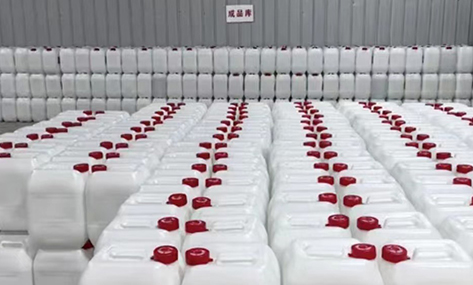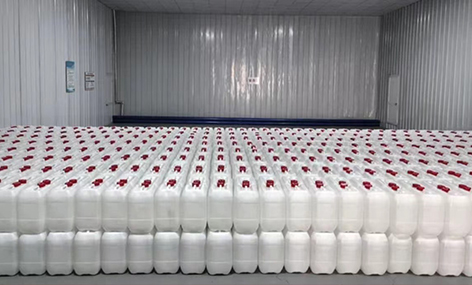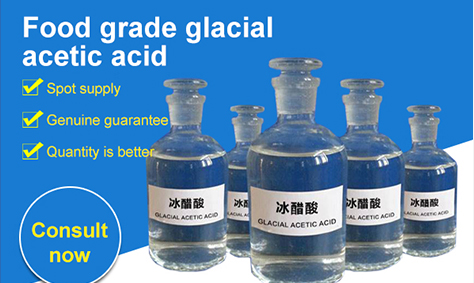
7월 . 30, 2025 04:20 Back to list
Food Grade Glacial Acetic Acid-Hebei Yishan Spices|Purity&Applications
**Food-grade glacial acetic acid** is a critical component in modern food processing, offering unique chemical properties that make it indispensable across various culinary applications. This article provides an in-depth analysis of its features, technical specifications, usage scenarios, and the industry standards that govern its production.
Product Overview
Food-grade glacial acetic acid is a high-purity form of acetic acid, recognized as an E260 food additive under the European Union's regulatory framework. It is classified as edible acetic acid, often referred to as ice acetic acid due to its tendency to form a solid at temperatures below 16.6°C. This compound, with the molecular formula CH₃COOH, is a fundamental ingredient in the production of vinegar and a key flavoring agent in numerous food products.



Key Features and Technical Specifications
The product's exceptional purity—≥99.8%—ensures its suitability for direct food applications. Its physical characteristics include:
- Color: Colorless liquid
- Odor: Strong, irritating vinegar-like smell
- Melting Point: 16.6°C
- Boiling Point: 117.9°C
- Relative Density: 1.0492
- Refractive Index: 1.3716
| Parameter | Specification |
|---|---|
| Purity | ≥99.8% |
| Melting Point | 16.6°C |
| Boiling Point | 117.9°C |
| Relative Density | 1.0492 |
| Refractive Index | 1.3716 |
Applications in the Food Industry
Glacial acetic acid's versatility is evident in its wide range of applications:
- Flavoring Agent: Used to create acidic seasoning solutions, sourness agents, and flavor enhancers. When diluted to 4-5% concentration, it produces edible vinegar with a flavor profile similar to traditional brewed vinegar.
- Preservative: Enhances the shelf life of canned goods, pickles, and processed foods by maintaining an acidic environment.
- Ingredient in Sauces: Commonly found in tomato sauce, mayonnaise, rice sugar sauce, and kimchi.
- Functional Additive: Applied in baby food, sardines, squid, and canned vegetables to improve texture and preservation.
- Beverage Production: Utilized in soft drinks, cold drinks, and confectionery to balance sweetness and add tanginess.
Industry Standards and Compliance
As a food-grade chemical, glacial acetic acid must adhere to stringent quality control measures. While specific NIST standards for acetic acid are not directly referenced in the context, the NIST Guide to the SI provides foundational principles for measurement accuracy and unit consistency, which underpin global food safety regulations. These standards ensure that products meet the required purity levels and safety benchmarks.
Company Background: Hebei Yishan Spices Co., Ltd.
Manufactured by Hebei Yishan Spices Co., Ltd., a reputable producer based in Shijiazhuang, Hebei Province, this product reflects the company's commitment to quality and innovation. With expertise in food additive manufacturing, the company adheres to international standards to deliver reliable solutions for the food industry.
Conclusion
Food-grade glacial acetic acid is a cornerstone of modern food technology, offering both functional and sensory benefits. Its high purity, chemical stability, and diverse applications make it an essential ingredient in countless food products. As the industry evolves, adherence to rigorous standards—supported by organizations like NIST—ensures that such products remain safe, effective, and compliant with global requirements.
References
NIST Guide to the SI (https://www.nist.gov/publications/nist-guide-to-the-si). National Institute of Standards and Technology. Retrieved [insert date].
-
Food Grade Glacial Acetic Acid - Hebei Yishan Spices Co., Ltd.|Food Additive, Acidulant
NewsJul.30,2025
-
Food Grade Glacial Acetic Acid-Hebei Yishan Spices|Acidity Regulator,Flavor Enhancer
NewsJul.30,2025
-
Food-Grade Glacial Acetic Acid-Hebei Yishan Spices Co., Ltd.|Acid Flavoring Agent&Flavor Enhancer
NewsJul.30,2025
-
Food Grade Glacial Acetic Acid-Hebei Yishan Spices|Purity&Applications
NewsJul.30,2025
-
Food Grade Glacial Acetic Acid - Hebei Yishan Spices Co., Ltd.|Food Additive, Acidifier
NewsJul.30,2025
-
Food Grade Glacial Acetic Acid - Hebei Yishan Spices | Purity, Applications, Safety
NewsJul.30,2025
